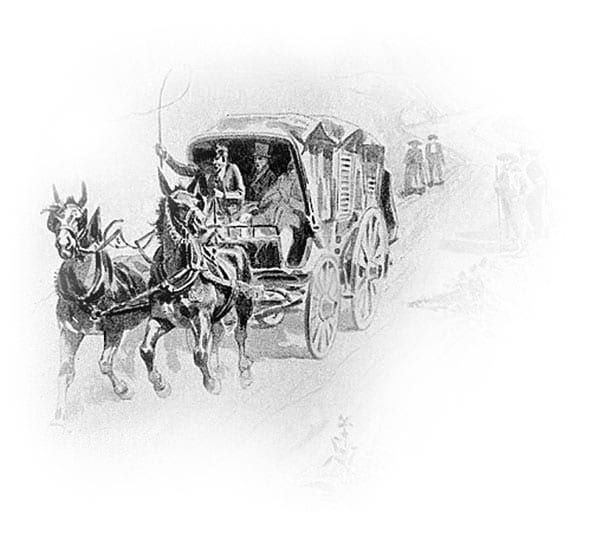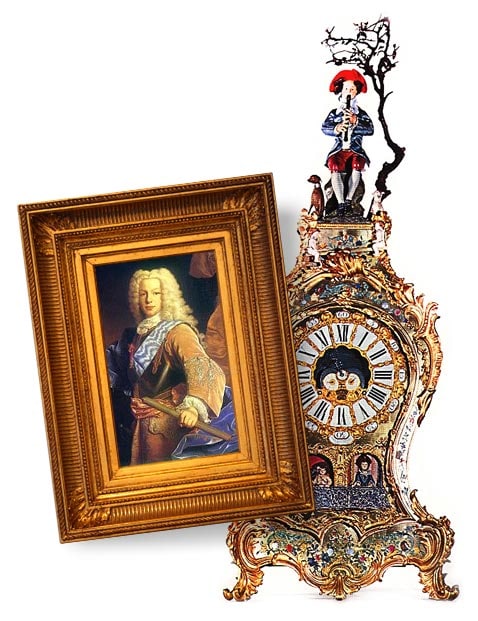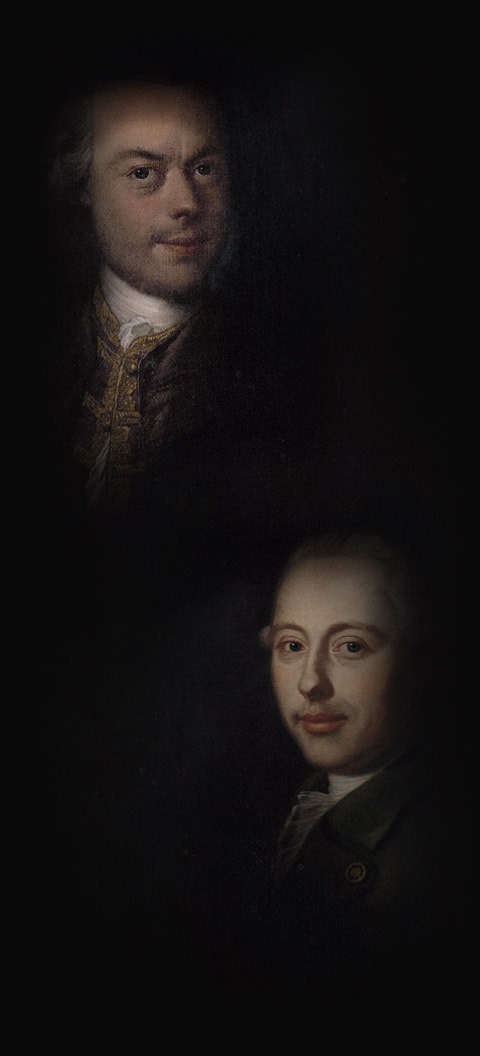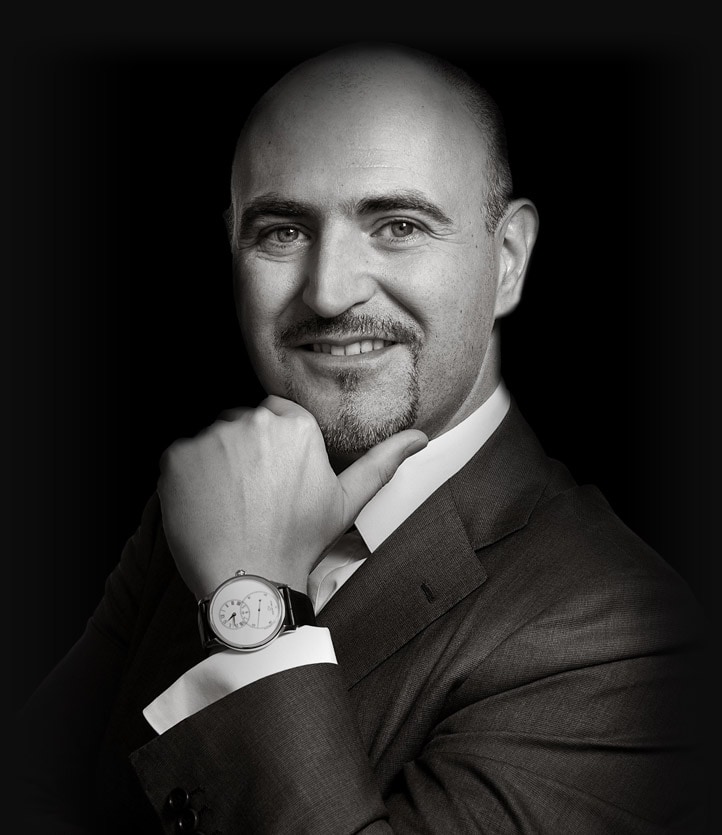Upon his return to La Chaux-de-Fonds in 1759, the large sum of money brought back from Spain enabled Pierre Jaquet-Droz to concentrate exclusively on making watches,
clocks and automata destined to become famous. He set to work, assisted by his son Henri-Louis and a neighbor's son, Jean-Frédéric Leschot, whom he took in after the boy's mother died
and thought of as his own. This was the beginning of a close and fruitful partnership.
1721
Founding

Pierre Jaquet-Droz was born in 1721 on a small farm (La Ferme de Sur le Pont) in La Chaux-de-Fonds. He began to take a serious interest in clockmaking and precision mechanics under the tutelage of older relatives from the Brandt-di-Grieurin, Sandoz and Robert families. It proved to be a true revelation for him.
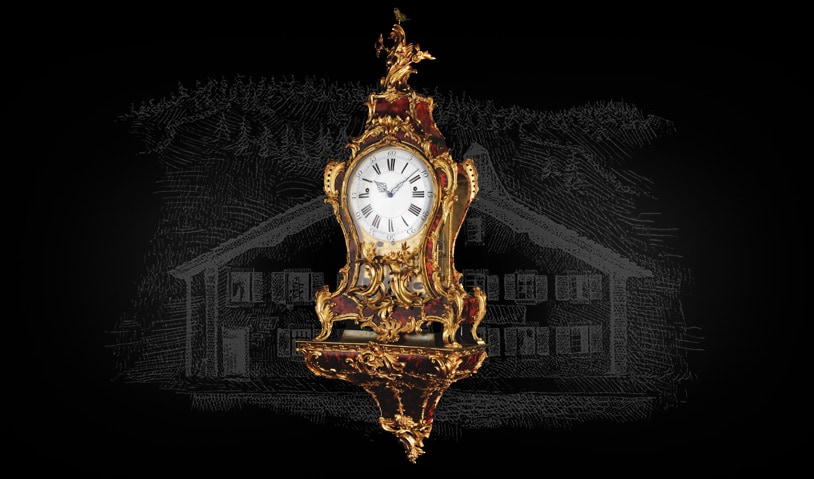
1738
The First Workshop
From 1738 to 1747, Pierre Jaquet-Droz devoted himself entirely to clockmaking. He produced a series of longcase (or "grandfather") clocks whose increasingly sophisticated movements outclassed anything that had been produced earlier. His manual dexterity, meticulous nature and serious approach to his craft, as well as the reasoned application of mechanical principles, led him to add music and automata to his movements, which came rapidly to the attention of a wealthy and demanding clientele.
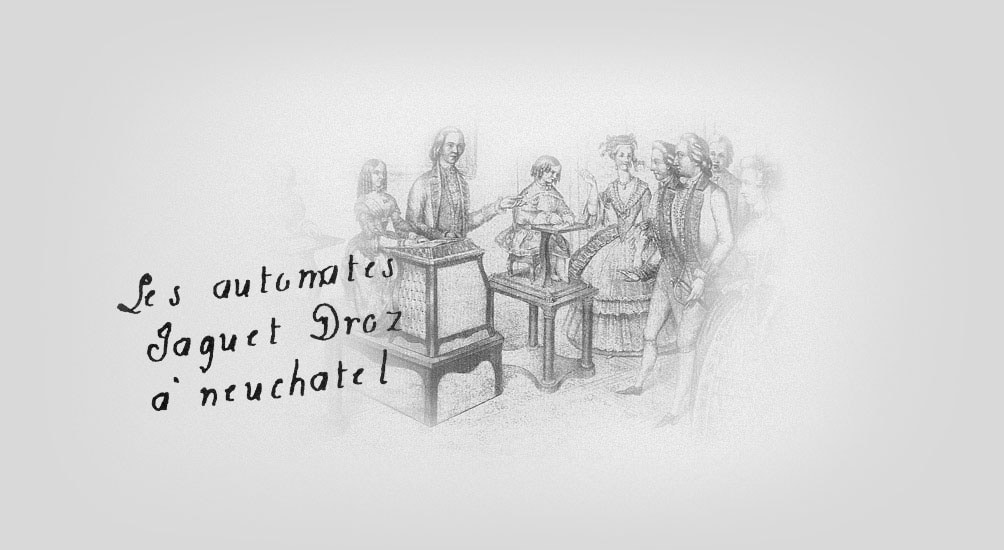
1773
Automata
From 1773 onward, Jaquet-Droz and Leschot perfected and marketed increasingly sophisticated automata. Their work culminated with the three humanoid automata: The Writer, The Draughtsman and The Musician, presented in La Chaux-de-Fonds in 1774. These three masterpieces, admired by connoisseurs from all over the world, consolidated the reputation of Pierre Jaquet-Droz and the success of the business. Encouraged by this success,
the Jaquet-Drozes took to the road to exhibit these fabulous creations. They took them from La Chaux-de-Fonds to Geneva and then, in 1775, to Paris where they were presented to Louis XVI and his queen, Marie-Antoinette. They were shown in the most prominent courts of Europe, with visits to London, the Low Countries and Flanders in 1780/1781 as well as northern France. They returned to Paris in 1782 and 1783, and exhibited in Lyon in 1784. The automata also travelled to the Russian court in Kazan and to Madrid.
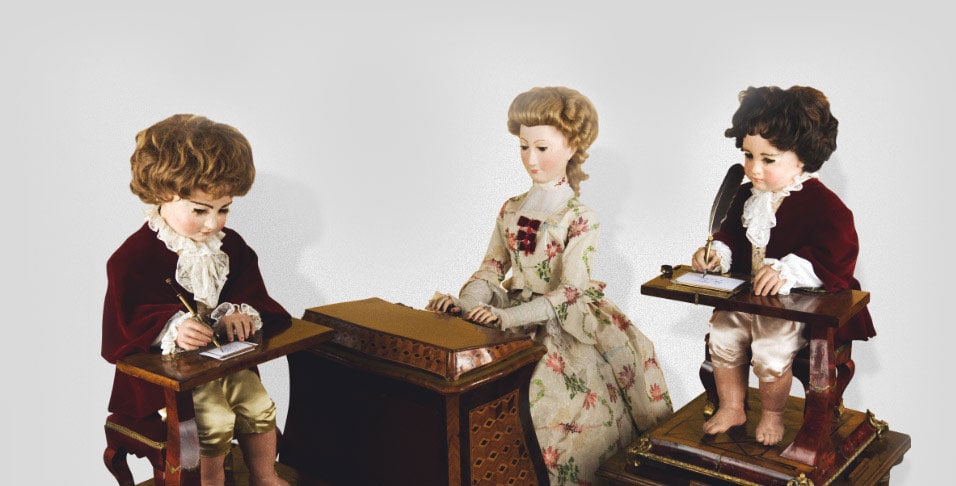
1784
GENEVA
For some ten years, the company continued to expand. It sold clocks, automata, watches and singing birds all over the world, especially in China. But the harsh climate of La Chaux-de-Fonds and the insidious London fog was detrimental to Henri-Louis' precarious state of health.
In 1784, he decided to move to Geneva, finding its artistic and literary life to his taste. Jean-Frédéric Leschot soon joined him and they decided to open the city's first clockmaking manufacture, one year before Vacheron Constantin set up shop, simultaneously introducing the production of timekeepers with major complications. The talent and interest shown by Henri-Louis Jaquet-Droz and Jean-Frédéric Leschot in the civic life of Geneva was quickly noted and approved. The City of Geneva presented both of them with the coveted Bourgeois d'Honneur Award, and welcomed their involvement in municipal activities. Jaquet-Droz was admitted to the newly reinstated Société des Arts, which was very active in the advancement of technical training.
He helped set up a factory-school in Geneva to make cadratures for repeater watches, developed many projects bearing on watchmaking technique and was an advocate for the professions associated with watchmaking. Pierre Jaquet-Droz moved into the house of a clockmaker named Dental, at the corner of rue Molard and rue du Rhône, which housed the workshops and his son's apartment.
2000
Never-ending expertise

Since the brand was acquired in 2000 by the Swatch Group, it has returned to its town of origin, La Chaux-de-Fonds and moved into its new Atelier de Haute Horlogerie in the summer of 2010.
The new premises, occupying 2,500 m2, will provide further incentive to grow and succeed. Like Jaquet-Droz timepieces, they reflect consummate expertise and craftsmanship enriched by the distinctive spirit of the house. Today, the brand is well equipped to respond to strong market demand and the aspirations of its clientele.
2000
Never-ending expertise

Since the brand was acquired in 2000 by the Swatch Group, it has returned to its town of origin, La Chaux-de-Fonds and moved into its new Atelier de Haute Horlogerie in the summer of 2010.
The new premises, occupying 2,500 m2, will provide further incentive to grow and succeed.
Like Jaquet-Droz timepieces, they reflect consummate expertise and craftsmanship enriched by the distinctive spirit of the house. Today, the brand is well equipped to respond to strong market demand and the aspirations of its clientele.

2002
Launch of the Grande Seconde
Inspired by a pocket watch created in the 18th century. A Jaquet Droz timeless classic, this timepiece features an elegant demonstration of the art of Grand Feu enameling on its dial,
on which the hours and minutes counter off-centered at 12 o’clock embraces the seconds counter positioned at 6 o’clock.

2009
Nicolas G. Hayek
Takes over the reins of Montres Jaquet Droz.
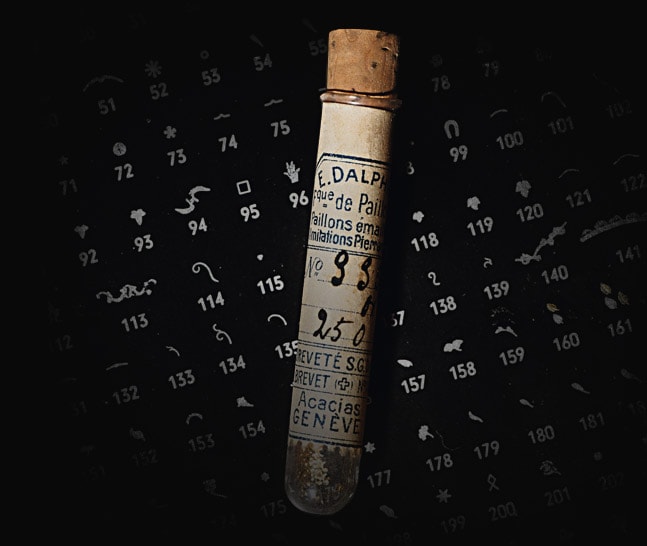
2011
Jaquet Droz moves production of Les Ateliers d’Art collection
to its Haute Horology Workshop (Atelier de Haute Horlogerie) and, in so doing, ensures the preservation of the age-old craftsmanship that is the brand’s hallmark.
A selection of magnificent timepieces in the Jaquet Droz collection showcase the arts of miniature painting,
sculpture and engraving, or paillonné enameling, in a tribute to the exacting skill of the watchmaker’s artisans.
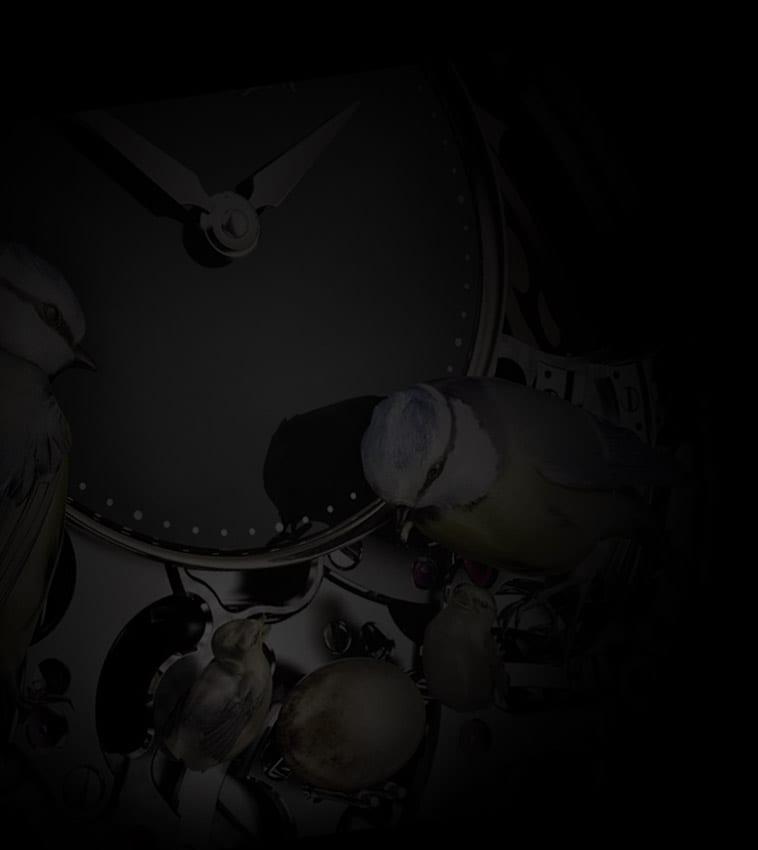
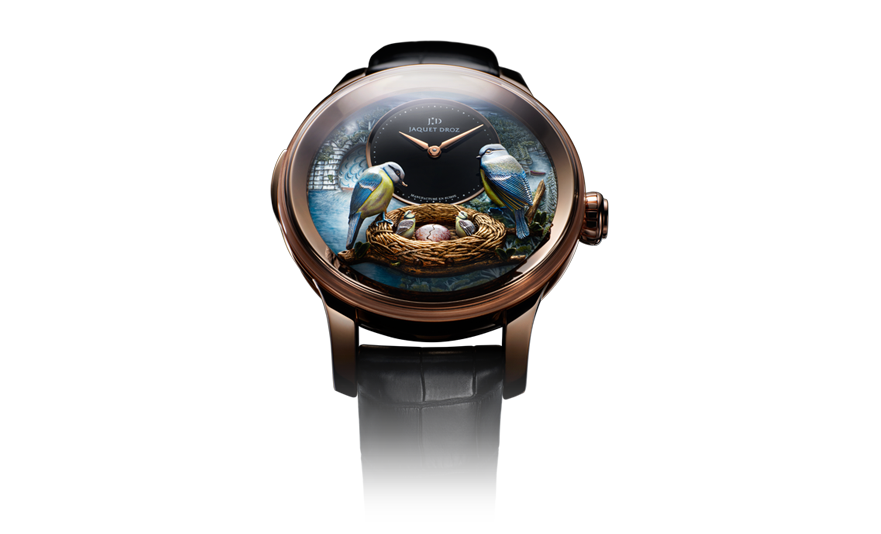
2012
The Bird Repeater
The Bird Repeater, a product of the imagination of the artisans at Jaquet Droz epitomizing the company’s heritage, prowess and creativity, is unveiled in November 2012.
This impressive masterpiece featuring an authentic automaton incorporates the full range of decorative crafts.

2012
Staging of the exhibition
“Automates et merveilles” (Automata and Marvels)
in collaboration with Montres Jaquet Droz to celebrate the shared genius of the Jaquet-Droz father and son team, and Leschot.
An impressive number of pieces and quantity of information go on display for the first time in three museums in the Neuchâtel region:
The Musée d’art et d’histoire of Neuchâtel,
the Musée d’horlogerie of Le Locle and the Musée international d’horlogerie of La Chaux-de-Fonds.



